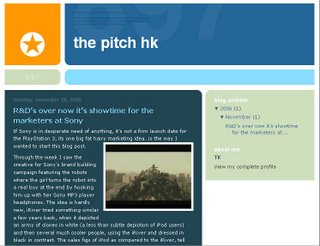The compatriot to Marketing Daily Singapore, the Hong Kong e-newsletter will first start off as a tri-weekly, and then move on to become a daily service right around the Chinese New Year period. It will be exactly the same as its Singapore cousin (right down to having a blog as well – The Pitch HK), aiming to offer the same solid, breaking news to its Hong Kong readers.

It doesn’t end there – our first Hong Kong print edition, a dedicated country edition, should be out in March of next year, and like many others, I’ll be eagerly waiting for its arrival. While both online and print products will have a strong Hong Kong focus and are written for Hong Kong readers, the publication will also bring readers relevant local, regional and global news and trends. A lot of credit goes to Dawn (Dawnie) our sales superstar and our regional editorial director Tony Kelly (TK) who have been working non-stop, steadily laying the groundwork since they went up to raise Marketing’s flag in the fragrant harbour.
There’s no kidding that it’s going to be a long hard road ahead but we’re all super excited about the potential of the new office, because among other things, it gives us the license to say yes, we are now a regional business. Should you have an office in Hong Kong (or even if you don’t), feel free to drop TK a note, whether it be to tell him where the best ‘ha cheong kai’ is, to tip him off, to add him onto the press mailing list, or to simply say hi – his details are tk@marketing-interactive.com.
I won’t go into length on this one -- while Marketing HK’s website is still in progress, you guys can check out TK’s inaugural blog for yourselves… and leave him a comment on the way too.
Here’s the link to The Pitch HK – enjoy.
http://pitchhk.blogspot.com/









